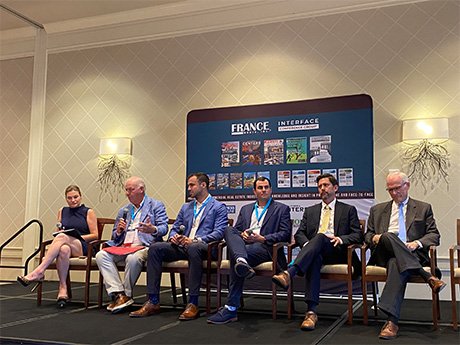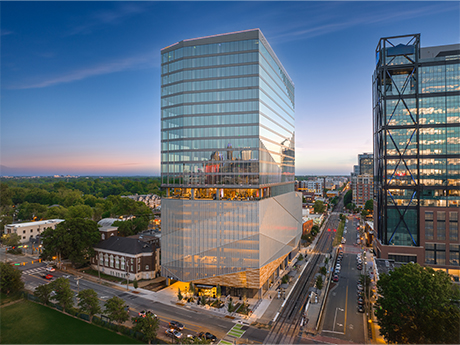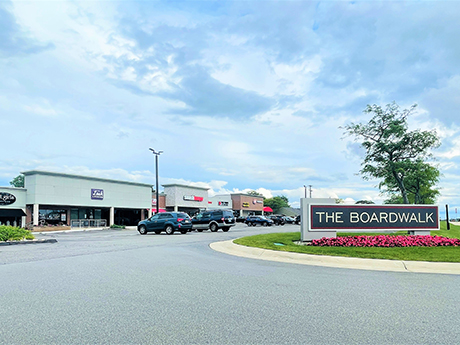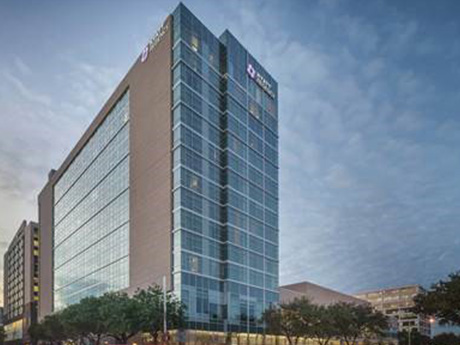By Andrew Jacob, Colliers The Cincinnati/Northern Kentucky industrial market demonstrated notable resilience in the second quarter of 2025, balancing strong long-term fundamentals with cautious short-term sentiment. Amid national headlines of slowing industrial demand and heightened uncertainty, the region continues to distinguish itself with a combination of strategic location, steady demand and disciplined development. Market fundamentals At the close of the second quarter, the market’s total inventory stood at approximately 293.6 million square feet, supported by a healthy vacancy rate of 5.2 percent, which remains below the national average of 7.1 percent. Bulk warehouse asking rates have remained relatively steady at $5.95 per square foot, reflecting a market rebalancing after several years of oversupply from robust development activity. In contrast, flex space asking rates continue to climb, now averaging $8.11 per square foot. This upward pressure is fueled by a scarcity of new supply — driven by land constraints and elevated construction costs. The market recorded 539,000 square feet of positive net absorption in the second quarter, bringing the year-to-date total to over 1 million square feet. This consistent absorption highlights enduring occupier demand despite broader caution in the national market. New construction activity continued at a measured pace, with 2 …
Market Reports
— By Brett Meinzer of MMG Real Estate Advisors — Despite ongoing challenges, Phoenix’s multifamily market is showing signs of stabilization and strength in key areas. Record Demand, Even in a Cooling Market In first-quarter 2025, net absorption reached 5,149 units, more than double the 10-year quarterly average and the second-highest quarterly total on record. On a 12-month basis, the market absorbed 18,413 units, setting a new high. “We’re seeing demand return to peak levels,” said Brett Meinzer, advisor at MMG Real Estate. “The number of units leased in the last year shows Phoenix’s long-term story remains intact.” Supply Is Slowing, Signaling Potential Stabilization While new supply remains elevated, the pace is shifting. First-quarter deliveries declined 36 percent from the prior quarter, and the development pipeline is now nearly 50 percent below its recent peak. “After years of heavy deliveries, the pipeline is thinning,” Meinzer said. “This pullback could help stabilize rent and occupancy rates as we head into 2025.” Rent Trends Still Negative But Improving Phoenix’s effective rent currently stands at $1,560, down 2.3 percent year over year, with average occupancy at 91.9 percent. Rent softness is largely driven by concessions and intense lease-up competition from new construction. However, …
Orlando is one of the country’s most active residential markets today — a modern-day “boomtown” experiencing rapid growth on multiple fronts. Economic expansion, population gains and infrastructure investments are fueling job creation and housing demand. Multifamily developers have responded with an unprecedented range of new affordable, middle-market and luxury housing options. Young professionals, retirees, urbanites, suburbanites, digital nomads and long-term residents can each find something to suit their lifestyles and budgets thanks to a diverse mix of residential settings and price points across the Central Florida region. Economic drivers Orlando has attracted more people and created more jobs than any other U.S. metro over the past year. In 2024, Orlando led the nation in job growth, adding more than 37,500 jobs, according to the Florida Department of Commerce. Major projects, such as Universal Studios’ Epic Universe, Walt Disney World’s expansion, the Lake Nona Town Center build-out and Westcourt (the Orlando Magic’s Sports and Entertainment District) are expected to bring another 60,900 jobs by 2027. The growing healthcare, education and tech sectors are bringing greater balance to the economy; more than 80 percent of the local workforce is employed outside of hospitality and leisure, according to the Orlando Economic Partnership. Orlando …
By Brooke Jacobsen, Colliers The Greater Cincinnati and Northern Kentucky office market is weathering the post-pandemic era with surprising nuance. While national headlines continue to focus on uncertainty and high vacancy, the local market is quietly seeing stable, albeit selective, activity, especially in healthcare and specialized user segments. After a slow winter, leasing activity across the region began to thaw in the second quarter of 2025. Year-to-date net absorption remains slightly negative, but market sentiment is gradually shifting, particularly among small to mid-size tenants. Most of the deal activity is coming from users in the 2,500- to 5,000-square-foot range, with several groups focused on healthcare and logistics services. Cincinnati’s Class B and C office space is seeing an unexpected level of demand, driven by affordability, location flexibility and users with highly specific space needs. Medical office continues to stand out as one of the most active sectors. Demand is strong across both urban and suburban submarkets, with notable traction in Cincinnati submarkets. Much of the recent healthcare-related activity has come from specialty practices, private groups and regional health systems looking to reposition their outpatient services. While Northern Kentucky offers value, many users are choosing to locate on the Cincinnati side …
— By Chris High, Steve Bruce and Conor Evans of Colliers — We’re in the middle of a market recalibration. On the office side, leasing has slowed significantly, with tenants downsizing footprints and pushing for shorter terms as hybrid work remains a dominant driver. In life sciences, we saw explosive growth from 2020 to mid-2022, but that pace has tapered off. VC funding is more selective, and some developers who stretched to convert commodity office and flex properties into lab space, often with less-than-ideal infrastructure, during the boom years, are now rethinking those strategies. Still, demand for high-quality, fitted lab space remains, especially in well-located projects by experienced owners like Longfellow, BioScience Properties, Sterling Bay, Healthpeak, BioMed, and ARE. These firms are adapting with thoughtful repositioning and delivering product that aligns with where tenant demand is today. In the near term, we expect continued headwinds. Commodity office space will face pressure on rents and absorption, while high-end life science campuses with strong sponsorship will be better positioned to attract demand. We expect Life Science to rebound in the next 12 to 18 months as capital markets settle and merger/acquisition (M&A) activity returns. Distressed office sales may continue as debt maturities …
By Taylor Williams Raising equity to get new projects to pencil out is, at the moment, immensely challenging in the Houston multifamily market. Although debt providers are showing a willingness to lend at favorable leverage ratios despite the fact that Houston has had healthy levels of new apartment deliveries in recent months, meeting the required returns that equity providers demand is challenging due to ever-increasing construction and operating costs. As a result, some projects are fizzling, even if they feature good locations or present compelling stories to capital providers. Editor’s note: InterFace Conference Group, a division of France Media Inc., produces networking and educational conferences for commercial real estate executives. To sign up for email announcements about specific events, visit www.interfaceconferencegroup.com/subscribe. This finding was the consensus among a panel of five Houston multifamily owners who were asked to identify the single-biggest challenge to new development in the current environment. The panelists gave their remarks at the inaugural InterFace Houston Multifamily conference, which took place on June 17 at The Briar Club and was attended by some 200 industry professionals. Crystal Kingsbury, director of marketing and business development at Anchor Construction, served as the panel moderator. “The equity guys are really tough right now,” …
The momentum in Charlotte’s office market continues into 2025, showcasing a strong first quarter marked by positive net absorption and a surge in multi-market tenant prospects. We are currently seeing three times as many expansions as downsizing among tenants, indicating a psychological shift among decision-makers across various industries. Despite some large vacancies affecting the overall market rate, the narrative on the ground in Charlotte is one of optimism and urgency. A few factors contribute to this trend, including companies are increasingly bringing employees back to the office, and those that overcorrected their space needs post-pandemic are reassessing their strategies. Particularly interesting is the demand for Class A office space in Charlotte, a thriving Sun Belt market. The most sought-after buildings in prime locations are nearly full, leading to reduced concessions and rising rents. This stands in stark contrast to reports of distressed assets negatively impacting modern office investments. Furthermore, the number of quality subleases are limited, and new construction is expected to come to a halt soon, particularly as remaining spaces in 110 East and Legacy Union are leased, most likely by year-end. If last year is any indication of a fundamental positive shift in the office sector, we can …
By Ashish Vakhariya, Marcus & Millichap Detroit’s retail market continues to show pockets of strength amid broader economic and retail sector headwinds. More affluent northern suburbs and the revitalizing urban core have demonstrated greater resilience, while limited construction activity should support the backfilling of existing space. Detroit’s position among the highest-yielding metros in the country will likely remain a key draw for investors, with capital focusing on well-located, necessity-based and service-oriented retail assets. Big-box downsizing and rising cost pressures create a cautious leasing environment: Detroit’s retail landscape recorded more than 1 million square feet of negative net absorption over the nine months that ended in March, with preliminary second-quarter figures indicating continued space relinquishment. Strained consumer demand and structurally challenged retail formats have contributed to a wave of bankruptcies and consolidations among major tenants, including Party City, Big Lots, Macy’s and Walgreens. Trade policy uncertainty has further heightened tenant caution, as elevated input costs are expected to weigh on leasing activity. A recent Michigan Retailers Association survey found that more than 60 percent of businesses statewide rely on imported goods. With consumers more price-sensitive, many retailers may struggle to pass on higher costs; however, tenants reliant on locally sourced inventory …
— By Will Moss of MMG Real Estate Advisors — After a turbulent stretch marked by oversupply and softening rents, Salt Lake City’s multifamily market is showing signs of stabilization in early 2025. Demand is returning, rent declines are easing and investor confidence is on the rise, all pointing to a market that may have found its footing. “We’re not calling a full recovery just yet,” says Will Moss, sales agent at MMG Real Estate. “But what we’re seeing is a return to fundamentals, steady demand, measured construction and buyers who are ready to transact again.” In first-quarter 2025, net absorption reached 1,044 units, outpacing the 894 units delivered and marking the first time in over a year that demand exceeded new supply. Over the past 12 months, approximately 4,500 units were absorbed, well above the metro’s historical average. Demand Rebounds, But Challenges Linger Salt Lake City mirrors national trends where improved economic confidence and easing inflation have begun to unlock pent-up housing demand. Notably, demand has been strongest among mid-tier renters, though even luxury properties, despite being the main source of new supply, posted a 1.8 percent rent increase year-over-year. Still, rents overall declined 0.3 percent annually, continuing a …
By Eric Jacobs, chief global growth officer, Aimbridge Hospitality With different verticals and geographic hotspots driving continued travel and performance potential in hospitality properties, investments in these assets should be on the radars of forward-thinking investors. A resilient market that was most recently challenged by the COVID-19 pandemic, the hotel sector continues to be an area of curiosity and consideration for investors looking for their next opportunity. At the start of the year, hotel transaction volume was projected to rise by 15 to 25 percent nationally, according to JLL’s Global Hotel Investment Outlook report for 2025, with institutional capital flowing back into the sector. While this projection hasn’t come to fruition, exploration of hospitality deals is ongoing, and the most prepared investors and developers are keeping fingers on the pulse of markets that will generate returns in the future. Enter Houston. A current standout market and one to watch, the city’s unique demand drivers, performance metrics and positioning within the larger Texas market have created fertile ground for hotel investment. Convention Disruption Brings Opportunity One of the most significant factors behind Houston’s surge today is the simultaneous renovation and expansion of convention centers in Austin, Dallas and Fort Worth. These …







